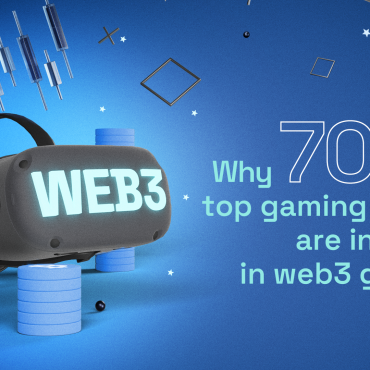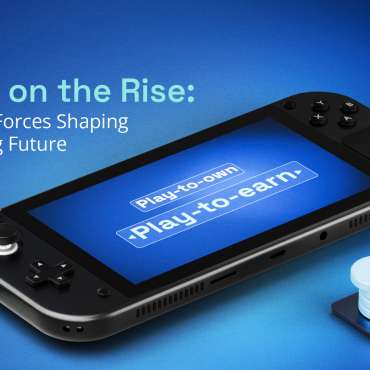Have you ever wondered why Web3 and blockchain have become such popular topics in gaming? Why are developers and gamers talking about it as the next major shift in how we play games? You are not alone, whether you are an experienced player or simply inquisitive about how new technology is transforming the business. The world of gaming has seen several evolutions, so why does it appear that Web3 is the next natural step?
Let’s break it down in an understandable way, looking at how blockchain technology is influencing gaming, fixing current problems, and creating new opportunities. By the conclusion of this blog, you’ll not only grasp the “why” behind Web3 gaming, but you’ll also realize the enormous possibilities it opens up for gamers and developers alike.
Why Aren’t Traditional Games Enough?
First and foremost, what is wrong with today’s gaming landscape? The reality is, that conventional gaming, often known as Web2 gaming, has certain constraints that have been plaguing players for years:
The blockchain industry expanded by 33% in Q4, with transaction volume nearly doubling in only six months. In sharp contrast, conventional gaming is on the decline. Global mobile gaming revenue is falling for the second year in a row, as developers face market saturation and stagnant user growth.
To make matters worse, just before Christmas, China announced draft laws to limit spending and rewards in video games, resulting in an unprecedented $80 billion fall in market value for major gaming companies.
In the face of legal and commercial issues, players should anticipate established game companies to develop new ways to attract and keep consumers, such as Web3’s decentralized models. This is due to a saturated market, limited growth, and greater regulation, which are resulting in lower margins.
The difficulty is that there are deeper flaws throughout the Web2 gaming industry. First, after seeing a fast rise in the number of users for global live service games and mobile games during the pandemic, user growth has slowed in some locations.
Second, due to a saturated market and comparable ventures, competitive pressure is increasing, resulting in greater advertising expenditures and decreased earnings.
Third, there are many regulatory issues at play. Europe’s GDPR and California’s CPA complicate personal identification for gaming producers, raising expenses, and diminishing brand effectiveness in reaching targeted customers. This diminishes the efficiency of user acquisition, which is problematic for both studios and ad networks that rely on game advertising income. Unity, for example, lost $5 billion in market capitalization after Apple’s app monitoring adjustments in 2022.
These pain factors raise the core question: Can Web3 gaming and blockchain address these problems?
What is Web3 Gaming and why should you care?
Web3 gaming provides actual ownership of in-game assets, decentralized economics, and increased user control. So, how does this work?
Web3 gaming relies entirely on blockchain technology, which is a decentralized ledger that securely monitors ownership of digital assets. Assets are owned by players rather than game producers, and they are recorded on a blockchain, making them accessible across games or potentially sold in real-world marketplaces.
So, why should you worry about that?
Ownership Matters: Consider owning a sword in a fantasy game. Web2 is a digital item that has become stuck within the game. In Web3, the sword is a Non-Fungible Token (NFT) that you may retain, sell, or use in numerous games. You own it, and no one can take it from you.
Decentralized Economies: In conventional games, the economy is controlled by the developers. Web3 gaming economies are shaped by players. Marketplaces allow you to trade, sell, and lend in-game items. Consider translating the marketplace of a game like World of Warcraft into real-world value.
Player Empowerment: Blockchain-based gaming transfers control from centralized corporations to individual gamers. Gamers can additionally vote on game decisions, stake assets for in-game incentives, and even create their games using current blockchain platforms.
How can Blockchain Address Key Concerns in Web2 Games?
If you’re still unsure about how blockchain can help with Web2 gaming issues, let’s take a closer look.
True ownership of in-game assets
When you buy an item in the Web3 gaming platform, it is recorded as an NFT on the blockchain. This means you own it forever and may sell it on any marketplace that supports the blockchain. What if a game shuts down? Not a problem. Your assets do not vanish with it. You may still use and trade them in other compatible games.
Decentralization and Player Freedom
Decentralization is a crucial aspect of blockchain technology. This indicates that no single entity controls the network. In the game, decentralization provides players with autonomy. Assume you’re playing a massively multiplayer online (MMO) game. Web2 allows game makers to shut off servers, effectively ending the experience. In Web3, the game will run as long as players and community members maintain the servers operational.
Interoperability Between Games
One of the most fascinating aspects of Web3 is interoperability. This implies you might potentially transfer your assets from one game to another. In Web2, your digital sword remains within the game for which it was designed. In Web3, you may transfer the sword to another game inside the same metaverse or ecosystem. This results in a coherent digital universe where your assets and identity remain constant across multiple games.
What is the Future of Gaming with Web3?
As we look ahead, it is evident that Web3 gaming has the potential to significantly disrupt the industry. But will it? We’re already seeing huge names like Ubisoft and EA explore blockchain technology, while smaller developers are building entire ecosystems around player-owned economies.
The change will not occur overnight. However, the more gamers and developers understand the benefits of Web3—ownership, control, and interoperability—the sooner we will see widespread adoption. Blockchain might be the key to unlocking a new era of gaming in which gamers are active participants in creating and managing the virtual worlds they adore.
Closing Thoughts
Web3 gaming is more than a technology improvement; it represents a revolution in the game business. It introduces the play-to-earn model, promotes interoperability across games, and establishes true ownership of in-game assets. But what’s even more intriguing is how it affects both gamers and game developers.
Web3 gaming allows individuals to transform their passion into business by earning real money while gaming. It removes obstacles, making gaming more accessible and adaptable than ever before.
On the other end, Web3 gaming is advantageous for game developers. It promotes player participation, builds strong communities, and expands worldwide markets. The prospect of recurrent revenue and greater security creates confidence between players and investors.
As we look ahead, the future of Web3 gaming is incredibly promising. The industry continues to evolve, with new and innovative projects constantly emerging.




